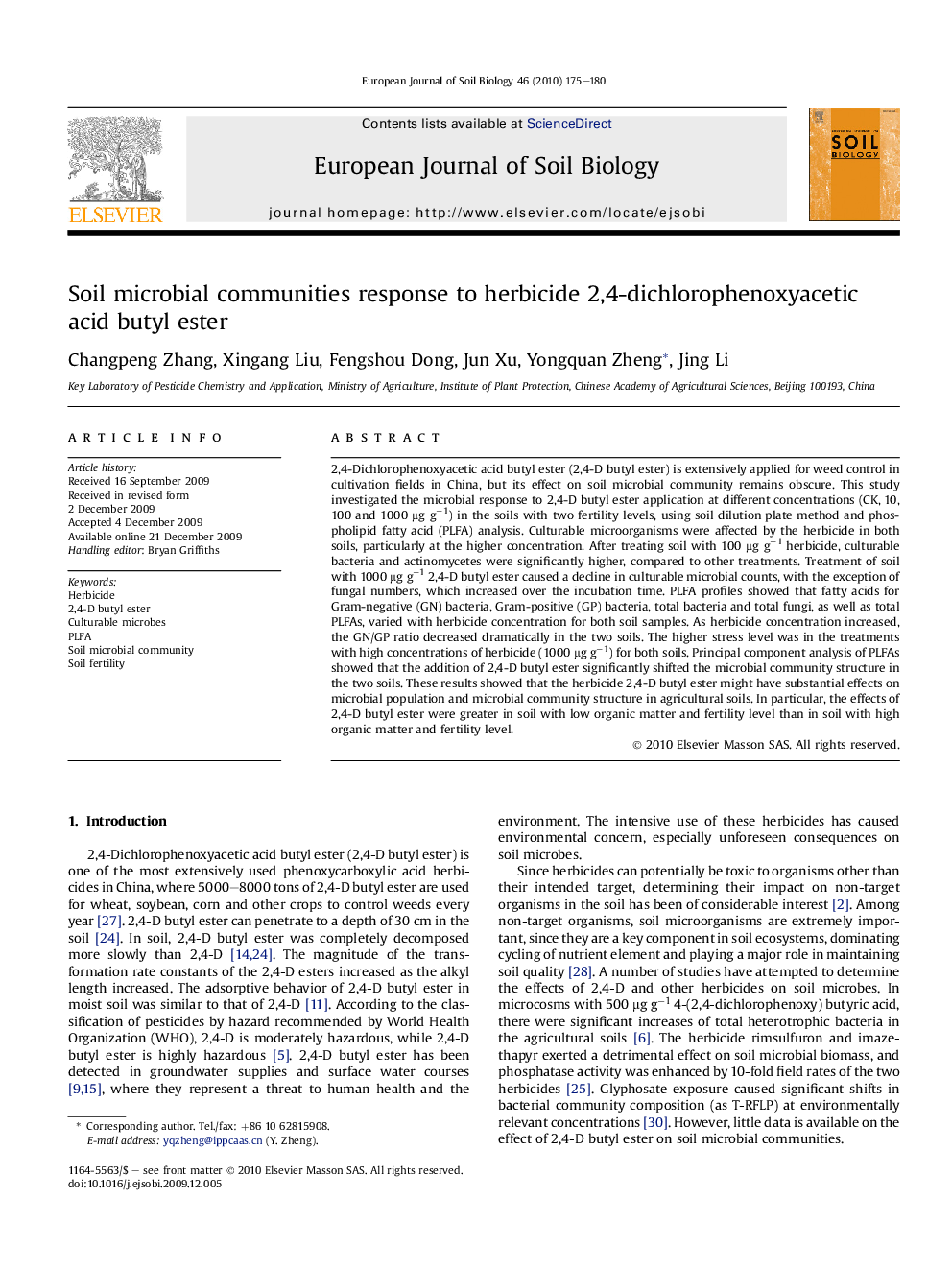| Article ID | Journal | Published Year | Pages | File Type |
|---|---|---|---|---|
| 4392160 | European Journal of Soil Biology | 2010 | 6 Pages |
2,4-Dichlorophenoxyacetic acid butyl ester (2,4-D butyl ester) is extensively applied for weed control in cultivation fields in China, but its effect on soil microbial community remains obscure. This study investigated the microbial response to 2,4-D butyl ester application at different concentrations (CK, 10, 100 and 1000 μg g−1) in the soils with two fertility levels, using soil dilution plate method and phospholipid fatty acid (PLFA) analysis. Culturable microorganisms were affected by the herbicide in both soils, particularly at the higher concentration. After treating soil with 100 μg g−1 herbicide, culturable bacteria and actinomycetes were significantly higher, compared to other treatments. Treatment of soil with 1000 μg g−1 2,4-D butyl ester caused a decline in culturable microbial counts, with the exception of fungal numbers, which increased over the incubation time. PLFA profiles showed that fatty acids for Gram-negative (GN) bacteria, Gram-positive (GP) bacteria, total bacteria and total fungi, as well as total PLFAs, varied with herbicide concentration for both soil samples. As herbicide concentration increased, the GN/GP ratio decreased dramatically in the two soils. The higher stress level was in the treatments with high concentrations of herbicide (1000 μg g−1) for both soils. Principal component analysis of PLFAs showed that the addition of 2,4-D butyl ester significantly shifted the microbial community structure in the two soils. These results showed that the herbicide 2,4-D butyl ester might have substantial effects on microbial population and microbial community structure in agricultural soils. In particular, the effects of 2,4-D butyl ester were greater in soil with low organic matter and fertility level than in soil with high organic matter and fertility level.
